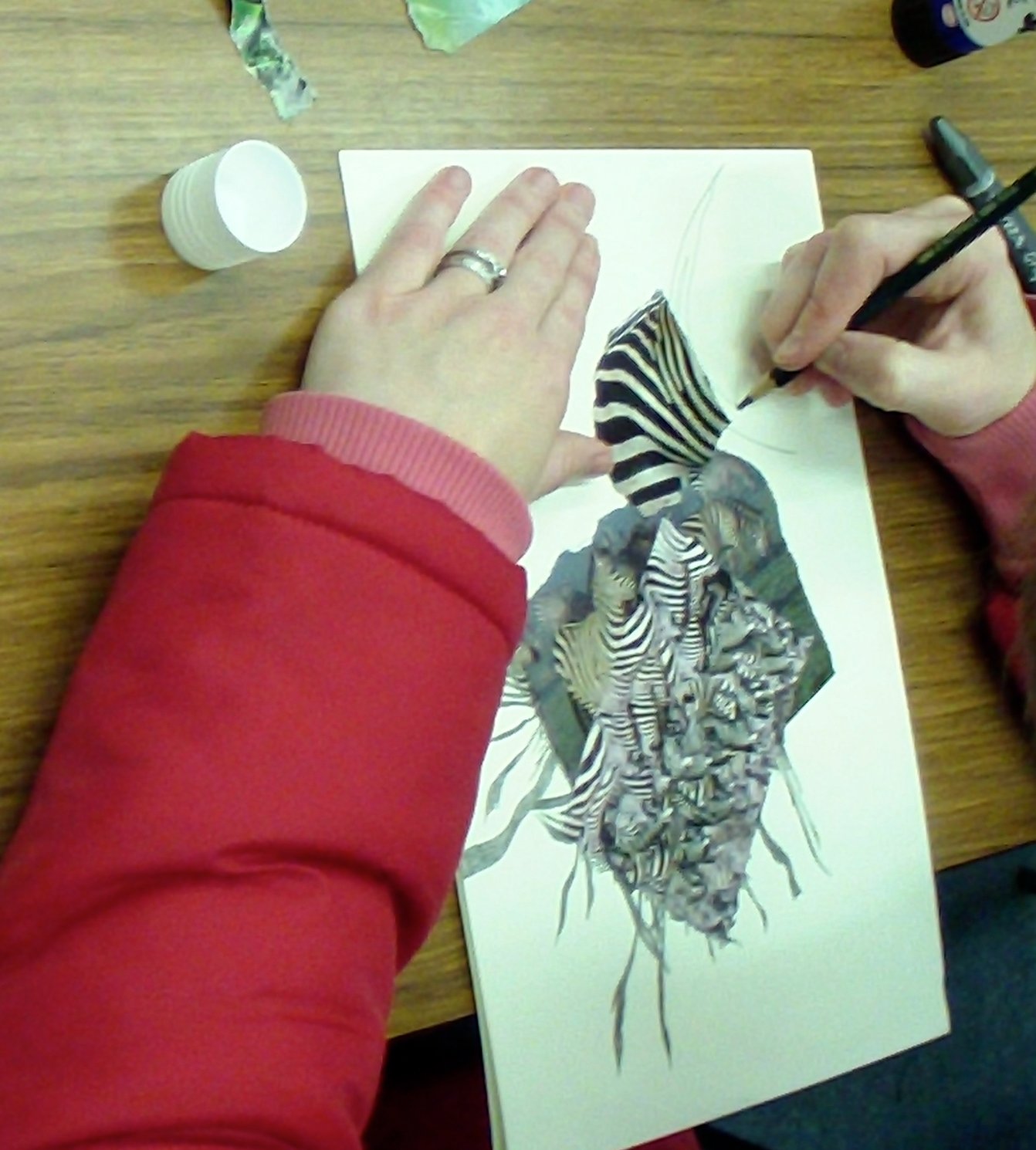
Prescribing the arts
The findings of a visual arts project for people with mental health problems make the case for further investment in the arts, health and wellbeing sector, says Gavin Clayton.
I have worked as both a carer and arts development professional in the field of arts, health and wellbeing for over 20 years, within institutions and in community settings. I have always been perfectly content to engage with the instrumental debate concerning measurable impact and efficacy of arts-based interventions. I have never seen this as being at the expense of the intrinsic qualities of artistic exploration and practice. When addressing the needs of very vulnerable people we need to be able to look closely at what we do in order to progress and grow our practice – in the same way that artists reflect and grow their practice. We need to know whether it is benefiting those taking part, and how and to what extent. Without the intrinsic quality of the arts there would be no instrumental measure, so I accept the combined approach.
Arts & Minds has delivered Arts on Prescription, Cambridgeshire thanks to several rounds of pilot action research funding. We have been able to refine our delivery design and research methodology for people with mild to moderate mental health problems such as depression and anxiety. In practice, this often extends to people with more profound and enduring mental health problems. They can self-refer or are referred by their GP, community psychiatric nurse, family support worker or housing support. We feel it is important to offer as many routes in for potential participants as possible.
Randomised control trial is the gold standard research methodology. For us this became a randomised waiting list control trial that still necessitated securing ethical approval. This methodology allowed everyone successfully referred to the project the assurance of participation, but allowed us a comparative measure to address the query of ‘If you did nothing, would people still feel better over time?’ and get as close to showing causation as possible. We believe this research is unique in our field and that it was delivered while providing creative encounters facilitated by professional artists with support from a counselor in the room.
Our delivery may have the potential to be cost-effective and be part of a strategy to reduce the risk of persistent moderate or severe depression
We delivered two 12-week terms of visual art sessions in two different venues in Cambridge City and South Cambridgeshire. Participants completed baseline, mid-point and end-point questionnaires that were constructed from measurement scales well known to GPs: the GAD-7 (Generalised Anxiety Disorder Assessment), PHQ-9 (Patient Health Questionnaire) and WEMWBS (Warwick Edinburgh Mental Wellbeing Scale). Overall, 61% participants reported a decrease in anxiety (GAD-7), 67% a fall in depression (PHQ-9) and 83% reported an increase in wellbeing (WEMWBS).
The study also showed that although the waiting list comparison group did experience minimum change over time, the workshop participants reported significant improvements in wellbeing and decreases in depression and anxiety over the same period.
The quantitative questionnaires were supplemented by qualitative semi-structured interviews. The results demonstrated self-reported improvements that we grouped into themes of rebuilding identity, making connections, expanded horizons, sense of purpose and a need to create. This was amply illustrated in a semi-structured interview when one participant reported: “It felt like having medication, but not. Using my hands with the making. It seemed to relax me. It helped me overcome, like, mental blocks. Things I’d been thinking I can’t do because that’s too difficult or I’m not capable of it. I think it has definitely been of help there. I’m much more willing to sort of say, well, I’ll just roll up my sleeves and get on with it.”
Participants began to accept themselves as creative individuals and many were encouraged to widen their aspirations for the future and embrace opportunities to broaden social networks. An increased sense of purpose emerged through exploring new skills, and participants made explicit links between increased motivation in making art and decreased anxiety and depression.
We have published our own report Arts on Prescription 2010–12. We sought a further level of investigation and an economic analysis ‘Investing in Arts on Prescription: an economic perspective’ was carried out by health economists at the London School of Economics. This compared the project to an established mental health service model targeted at the same population group. It concluded that our delivery may have the potential to be cost-effective and be part of a strategy to reduce the risk of persistent moderate or severe depression. Whether this evidence will result in commissions from the local NHS Clinical Commissioning Group or similarly hard-pressed local authorities is uncertain, but we continue to make the case in language they can understand and this furthers our own understanding too.
What the health economists also concluded was that this model is worth investing in and to carry out further longitudinal study. In layman’s terms that means more pilots! In terms of people suffering with depression and anxiety, more delivery!
Building on the findings of this report, we have been successful in securing sufficient funds to double the scale of delivery and establish a truly county-wide service that will deliver two terms of visual art workshops across four very diverse settings in Cambridgeshire. These include Cambridge City, Cambourne (a new town in rural South Cambridgeshire), inner city Huntingdon and alternately the market towns of March and Wisbech in North Fenland. Funders for this expansion include the NHS via the Cambridgeshire Clinical Commissioning Group, Cambridgeshire County Council, district councils and ACE through its Grants for the Arts programme.
We are currently seeking an investor to support further expansion of the programme and to publish our findings in a medical journal later this spring.
Gavin Clayton is Executive Director of Arts & Minds.
www.artsandminds.org.uk
Tw: @mindsarts
Join the Discussion
You must be logged in to post a comment.